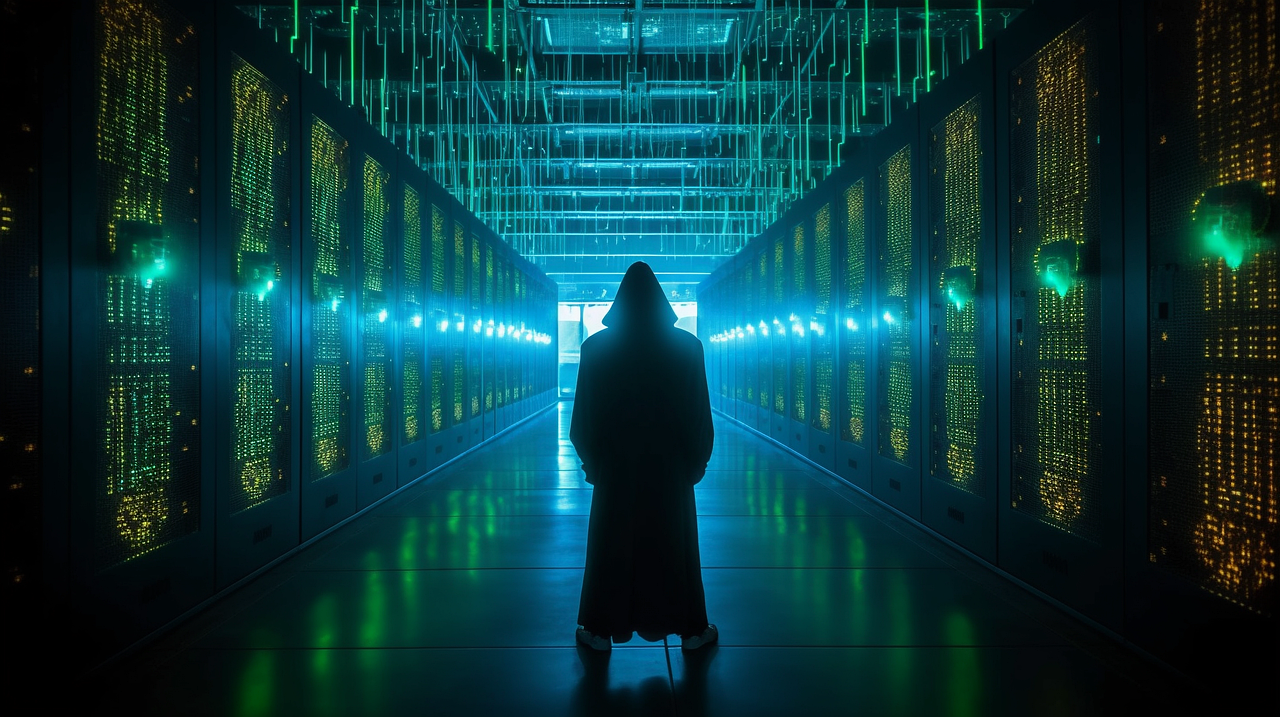Contents:
With 217 ransomware attacks hitting educational organizations in the past year alone (a 35% increase), the message is clear: educational institutions can no longer afford to treat cybersecurity as an afterthought.
Educational environments present unique challenges that make them particularly vulnerable. Unlike traditional businesses, schools and universities operate with open cultures that prioritize collaboration and accessibility — values that often conflict with cybersecurity best practices. Add limited budgets, diverse user bases, and aging infrastructure, and you have a perfect storm for cyber threats.
What is Cybersecurity in Education? – Definition
Cybersecurity in education encompasses the policies, technologies, and practices designed to protect educational institutions’ digital assets, infrastructure, and sensitive data. This goes far beyond basic IT protection to include student data protection under FERPA regulations, research security for valuable intellectual property, and operational continuity to ensure uninterrupted learning.
The scope is broader than traditional enterprise security because educational institutions must account for unique factors: users ranging from elementary students to international researchers, open campus cultures that encourage information sharing, legacy systems that can’t easily be upgraded, and strict regulatory requirements across multiple jurisdictions.
Modern educational environments rely heavily on interconnected systems spanning on-premises infrastructure, cloud services, and mobile technologies. primary schools, secondary schools, K-12 schools and institutions typically operate with shared device programs, cloud-based learning platforms, and limited IT expertise. Higher education adds complexity with research networks, federal funding requirements, international collaborations, and valuable intellectual property.
What is the Role of Cybersecurity in Education?
Cybersecurity in education is essential for protecting students and educational institutions from various cyber threats, such as phishing attacks and ransomware incidents.
The education sector, including primary, secondary, K-12 schools and higher education, must prioritize comprehensive cybersecurity measures to safeguard sensitive information. With the support of the Department of Education and the Department of Homeland Security, resources to help K-12 schools enhance their cyber security posture are crucial.
School leaders should implement effective cybersecurity training and management strategies to tackle systemic risks and ensure a well-trained cyber security workforce. By promoting a culture of cybersecurity awareness and employing robust frameworks, the K-12 community can better secure websites and reduce the risk of data breaches, thereby strengthening the nation’s cybersecurity infrastructure for the future.

Primary Threats Facing Educational Institutions
The education sector is increasingly becoming a target for cyber criminals, facing a range of cyber threats that pose significant security risks. Educational institutions, including primary schools, secondary schools, and higher education institutions, are particularly vulnerable to common cyber incidents such as phishing attacks, ransomware attacks, and data breaches.
As the number of cyber breaches and attacks continues to rise, it is crucial for education providers to prioritize cybersecurity and implement robust security measures.
1. Ransomware: The Leading Threat
Ransomware represents the most devastating threat to educational institutions, highlighting the need for resources to help secondary and K-12 schools mitigate cyber risk. These attacks encrypt critical systems and demand payment for restoration, causing extensive operational disruption. When ransomware hits, classroom technology fails, assessment systems go offline, and communication tools become unavailable. Recent incidents have forced community colleges to close completely during peak enrollment periods, with some facing ransom demands exceeding $4.5 million, demonstrating the critical need for cybersecurity and infrastructure security.
2. Email-Based Attacks and Phishing
With 94% of cyberattacks originating from email, sophisticated phishing campaigns exploit the open communication culture of academic environments. Business Email Compromise (BEC) attacks impersonate trusted figures like administrators or vendors, while spear phishing attack campaigns use academic calendars and institutional terminology to appear legitimate. The education sector shows particular vulnerability, with users falling for phishing scams at twice the rate of the general population.
3. Data Breaches and Identity Theft
Educational institutions store vast amounts of personally identifiable information, making them attractive targets for data theft. Security breaches typically expose Social Security numbers, financial information, academic records, and health data. The impact extends beyond immediate privacy violations to include regulatory compliance issues under FERPA, GDPR, and state privacy laws.
4. Advanced Persistent Threats (APTs)
Nation-state actors increasingly target educational research and intellectual property. Groups like Lazarus and Mustang Panda have specifically targeted academic institutions to steal federally funded research and valuable intellectual property. These identified cyber breaches or attacks establish persistent access, to monitor research progress over extended periods.
Unique Challenges in Educational Cybersecurity
Budget Constraints and Resource Limitations
Educational institutions face severe financial constraints that significantly impact cybersecurity capabilities. Research shows that only 20% of higher education institutions have comprehensive cybersecurity strategies, compared to 70% of large businesses. Competing priorities force difficult choices between academic programs and security investments, with cyber security often receiving inadequate funding.
Remote Learning and BYOD Challenges
The expansion of remote learning has dramatically increased attack surfaces. Students and staff connect through unsecured home networks, use personal devices lacking enterprise security, and access educational resources from diverse geographic locations. IT teams lose visibility into device activity and struggle to provide support for remote users.
Legacy Infrastructure Vulnerabilities
Many educational institutions operate aging technology that creates significant security vulnerabilities. Windows 7 systems, outdated network equipment, and specialized academic software may lack regular security updates. Budget constraints and academic calendar requirements make infrastructure upgrades challenging, while legacy systems often cannot support modern security tools.
Cultural and Behavioral Challenges
The open, collaborative culture of educational institutions conflicts with traditional security approaches. Faculty and students expect broad access to resources and may resist security measures viewed as burdensome. Academic freedom concerns can complicate security monitoring, while diverse user bases require specialized training approaches.
Staffing and Skills Gaps
Educational institutions struggle to recruit and retain qualified cybersecurity professionals. Private sector competition, salary disparities, and limited career advancement opportunities contribute to high turnover rates. With 3.5 million unfilled cybersecurity positions projected globally by 2025, educational institutions face an uphill battle for talent.
Cybesecurity in Education Statistics – The Current Threat Landscape
The statistics paint a sobering picture of the current threat environment:
- Education ranks as the 3rd most targeted industry globally for cyberattacks
- $2.73 million average cost per ransomware attack — $300,000 more than the next highest sector
- 94% of cyberattacks originate from email, making email security critical
- 146% increase in IoT malware attacks as smart classrooms become more common
- 2,300 weekly attacks face educational institutions globally
Microsoft’s threat intelligence data reveals that 61% of malware encounters target the education sector, making it the most affected industry. In the UK, 43% of higher education institutions report experiencing cybersecurity incidents at least weekly.
These statistics alone highlight the urgent need for secondary K-12 schools and school districts to enhance cyber security measures. Educational institutions must work towards building a strong cybersecurity framework, bolstering their cybersecurity posture while reducing their cybersecurity risk. This is essential for protecting students and ensuring they are safely connected in the education sector.

Essential Security Solutions for Education
1. Email Security: The Critical First Line
Given that 94% of attacks originate from email, robust email security represents the most critical investment. Advanced solutions use AI-powered detection to identify sophisticated phishing attempts, business email compromise, and malicious attachments. Features should include real-time link analysis, attachment sandboxing, and user reporting integration designed for educational environments.
2. Endpoint Protection and Device Management
Educational institutions must secure diverse endpoints from student devices to research equipment. Next-generation antivirus solutions using behavioral analysis can detect unknown threats, while device encryption protects data on lost or stolen devices. Mobile device management becomes essential for BYOD environments, providing remote wipe capabilities and application control.
3. Network Security and Segmentation
Modern educational networks require next-generation firewalls with deep packet inspection and application-layer filtering. Network segmentation isolates critical systems, guest networks, and IoT devices to prevent lateral movement. DNS security provides an additional control point for blocking malicious domains and enforcing acceptable use policies.
4. Multi-Factor Authentication (MFA)
MFA provides essential protection against compromised credentials. Educational implementations must balance security with usability across diverse age groups and technical skill levels. Integration with learning management systems and single sign-on capabilities streamlines user experience while maintaining data security.
5. Cloud Security and Data Protection
As educational institutions increasingly rely on cloud services, specialized cloud security becomes critical. Cloud Access Security Brokers (CASB) monitor data access and sharing, while comprehensive encryption protects data at rest and in transit. Automated backup and disaster recovery ensure rapid restoration following incidents, which is a priority for the education sector.
Building a Comprehensive Security Strategy
Risk Assessment and Planning
Effective cybersecurity begins with comprehensive risk assessment identifying institutional vulnerabilities, critical assets, and potential threat vectors in the educational sector. This assessment should consider the unique characteristics of educational environments, including open cultures, diverse user bases, and regulatory requirements.
Security Awareness and Training
Given the human element in most cybersecurity incidents, comprehensive training programs become essential. Educational institutions need specialized approaches for different user groups, from elementary students to senior faculty. Regular phishing simulations and security awareness campaigns help build a culture of cybersecurity awareness.
Incident Response Planning
Educational institutions need incident response plans specifically designed for academic environments to effectively protect student and faculty information. These plans should address communication protocols, academic calendar considerations, and regulatory notification requirements. Regular testing and updates ensure plans remain effective as threats evolve.
Vendor Management and Compliance
Educational technology vendors must meet strict security requirements, particularly for student and staff data protection and information security. Due diligence processes should evaluate vendor security practices, compliance capabilities, and incident response procedures. Ongoing monitoring ensures continued compliance throughout vendor relationships.
The Path Forward: Proactive Protection
The cybersecurity challenges facing educational institutions are significant but not insurmountable. Success requires a comprehensive approach that balances security with the open, collaborative culture that defines educational excellence, supported by robust cybersecurity education. By implementing layered security solutions, fostering security awareness, and building institutional cybersecurity capabilities, educational institutions can protect their students, staff, and valuable research while maintaining their educational mission.
The key is recognizing that cyber security is not a one-time investment but an ongoing commitment requiring dedicated resources, expertise, and institutional support. With proper planning and implementation, educational institutions can build resilient cybersecurity programs that protect against current threats while adapting to future challenges in cybersecurity and infrastructure security.
Choosing the Right Solutions for Your Institution: How Can Heimdal® Help You?
Taking into consideration the complex matter and the large threat exposure, there are multiple ways in which you can protect your systems.
Opting for a solution like Heimdal’s very own Threat Prevention Endpoint can be a good choice. A strong DNS filter is adequate for stopping threats before they become bigger problems. Our Predictive DNS, a truly revolutionary AI & ML algorithm that is capable of predicting if a domain is malicious before it will host any malicious content is suitable for stopping threat actors in their tracks. Advanced neural networks and AI linguistic analysis are capable of achieving an unprecedented level of truly intelligent prevention, enhancing cyber resilience.
Furthermore, our DNS will allow you to protect your students from being exposed to violent ideologies present in the online space. You can control at a granular level the access of your students to inappropriate videos and content on sites such as YouTube, TikTok, Facebook, and others, plus, you gain:
- Ability to provide logs to an external SIEM;
- Support logging for 90 days;
- Create access policies based on IP ranges and active directory groups;
- Ability to inspect SSL traffic.
Our solution also allows you to create custom whitelists and blacklists with pre-defined rules. And by using the ‘block by category’ feature, our Predictive DNS technology will allow you to block sites and content based on contextualized keyword analysis. In this way, pupils and staff will not be able to access dangerous ideologies or search for detrimental and possibly harmful content.
By preventing access to these dangerous ideologies, we hope to mitigate the risk present to both the student and school system.
Heimdal® DNS Security Solution
- Machine learning powered scans for all incoming online traffic;
- Stops data breaches before sensitive info can be exposed to the outside;
- Advanced DNS, HTTP and HTTPS filtering for all your endpoints;
- Protection against data leakage, APTs, ransomware and exploits;
Besides DNS, a capable antivirus and firewall are essential. An example can be our very own Next-Gen Anti-Virus, enhanced with our XTP and MDM modules. This antivirus uses some of the strongest AI-integrated antivirus on the market today. We strongly believe that for you to receive the protection that you need; this must be included.
Our Antivirus and MDM automatically protect against threats within the system by isolating them within the sandbox, along with the strongest brute force prevention in the market. Our MDM allows us to operate on most cell phones and tablets.
Heimdal® Next-Gen Endpoint Antivirus
- Multiple layers of detection.
- Enhanced Brute-Force Protection.
- Remote device control with MDM.
Furthermore, we can also help you by providing a tailored training plan, for school IT professionals, professors, and students alike.

Frequently Asked Questions About Cybersecurity in Education
Why are educational institutions such attractive targets for cybercriminals?
Educational institutions store vast amounts of valuable personal data including Social Security numbers, financial information, and academic records. They often have limited cybersecurity budgets, operate with open network cultures, and use legacy systems that are difficult to secure, making cyber security training essential. Additionally, they typically have weaker defenses compared to other sectors while storing highly valuable research data and intellectual property.
How much do cyber attacks cost educational institutions?
Ransomware attacks cost educational institutions an average of $2.73 million per incident — $300,000 more than the next highest sector, emphasizing the importance of cyber incident preparedness and protecting student data. These costs include direct remediation, system restoration, regulatory fines, and long-term reputational damage. The total cost has more than tripled in the past year.
What are the most common cyber threats facing schools and universities?
The primary threats include ransomware (affecting education at one of the highest rates), phishing and email-based attacks (94% of cyberattacks originate from email), malware targeting smart devices (146% increase), data breaches exposing student information, and nation-state actors targeting research data.
How has remote learning increased cybersecurity risks?
Remote learning has expanded attack surfaces through personal devices, unsecured home networks, and increased reliance on cloud platforms. It’s more difficult to manage device security, provide IT support, and monitor network activity when users are distributed geographically, which poses significant cybersecurity threats.
What essential cybersecurity measures should educational institutions implement?
Essential measures include comprehensive email security (given 94% of attacks originate from email), multi-factor authentication, endpoint protection for all devices, network segmentation, regular security training, automated patch management, and incident response planning specific to educational environments.
How can schools with limited budgets improve their cybersecurity?
Schools should prioritize high-impact, cost-effective solutions like email security and MFA, leverage free cyber security resources from government agencies, focus on security awareness training, use cloud-based solutions to reduce infrastructure costs, and consider regional consortiums for shared cybersecurity resources.
What compliance requirements must educational institutions meet?
Educational institutions must comply with FERPA for student data protection, state data breach notification laws, GDPR for international students, and various federal requirements for research data. Compliance failures can result in fines, funding losses, and legal liability, highlighting the need for robust cyber security guidance.
How should educational institutions prepare for emerging cyber threats?
Institutions should stay informed about threat trends, invest in flexible security architectures, develop comprehensive incident response capabilities, build partnerships with cybersecurity experts, and participate in threat intelligence sharing with other educational institutions.
Conclusion
In today’s digital age, cybersecurity has become an increasingly important concern for educational institutions. The rise in cyberattacks on schools and universities means that implementing effective cybersecurity solutions is no longer optional but a necessity.
Educational institutions have access to a variety of cybersecurity solutions, ranging from firewalls and antivirus software to intrusion detection systems and encrypted communication channels. By implementing these solutions, they can safeguard their networks and sensitive data from potential threats.
As we move forward into an ever-more digital world – protecting our education system must remain a top priority for all involved parties: educators themselves as well as policymakers at every level possible including federal government entities like those working hand-in-hand across international borders!
Learn more about how Heimdal can help provide cybersecurity solutions for educational institutions.
If you liked this article, follow us on LinkedIn, Twitter, Facebook, Reddit, and Youtube, for more cybersecurity news and topics.










 Network Security
Network Security
 Vulnerability Management
Vulnerability Management
 Privileged Access Management
Privileged Access Management  Endpoint Security
Endpoint Security
 Threat Hunting
Threat Hunting
 Unified Endpoint Management
Unified Endpoint Management
 Email & Collaboration Security
Email & Collaboration Security







